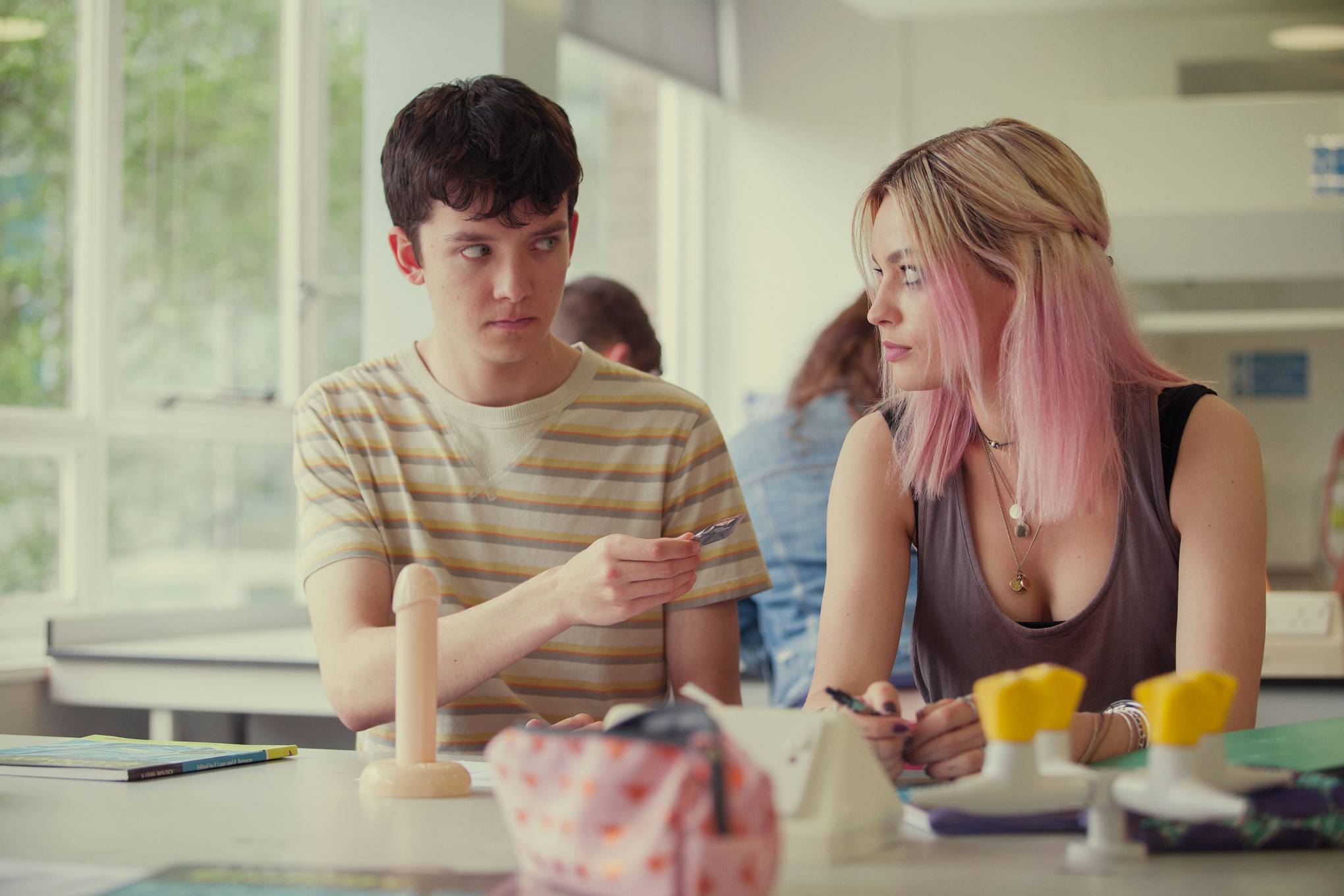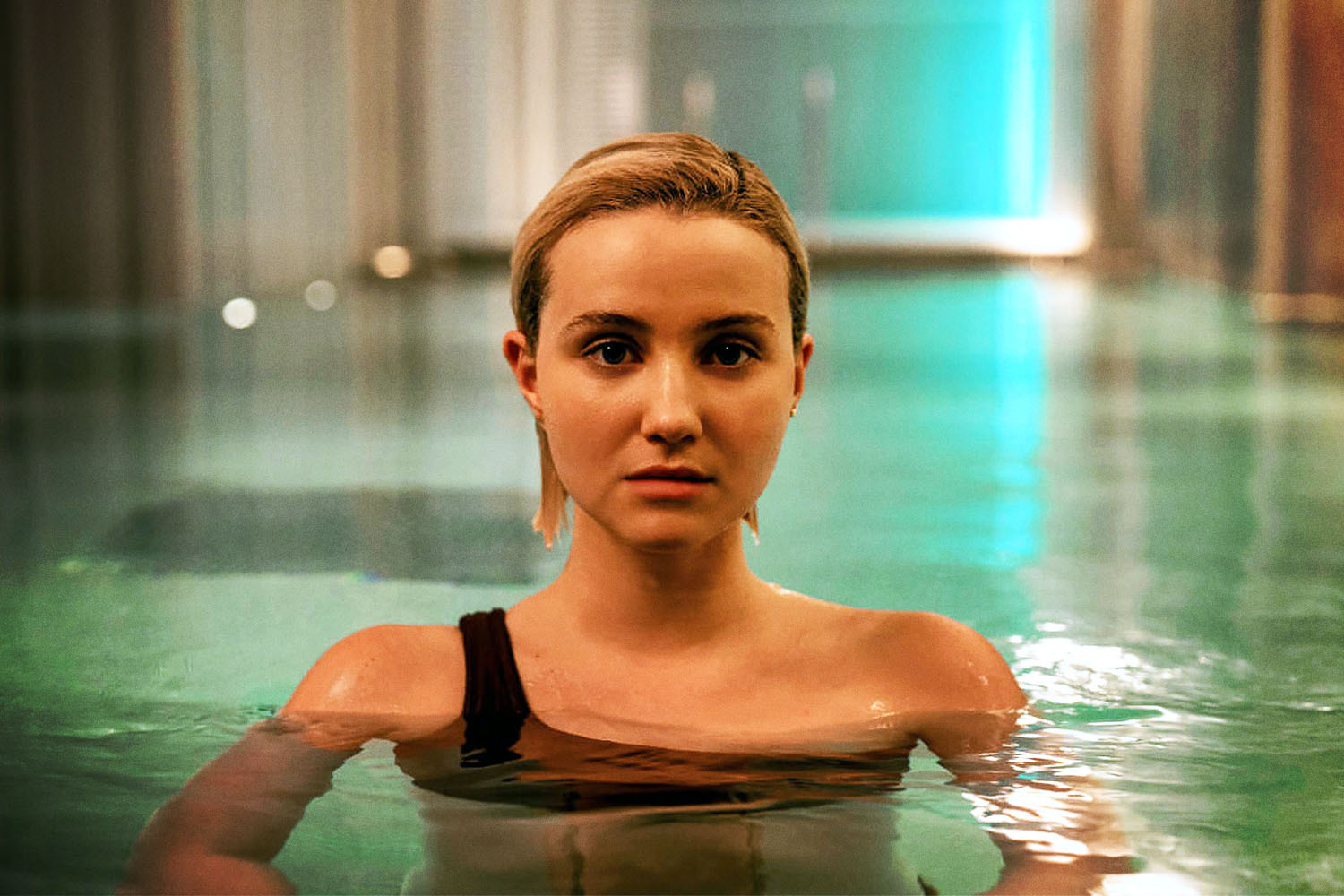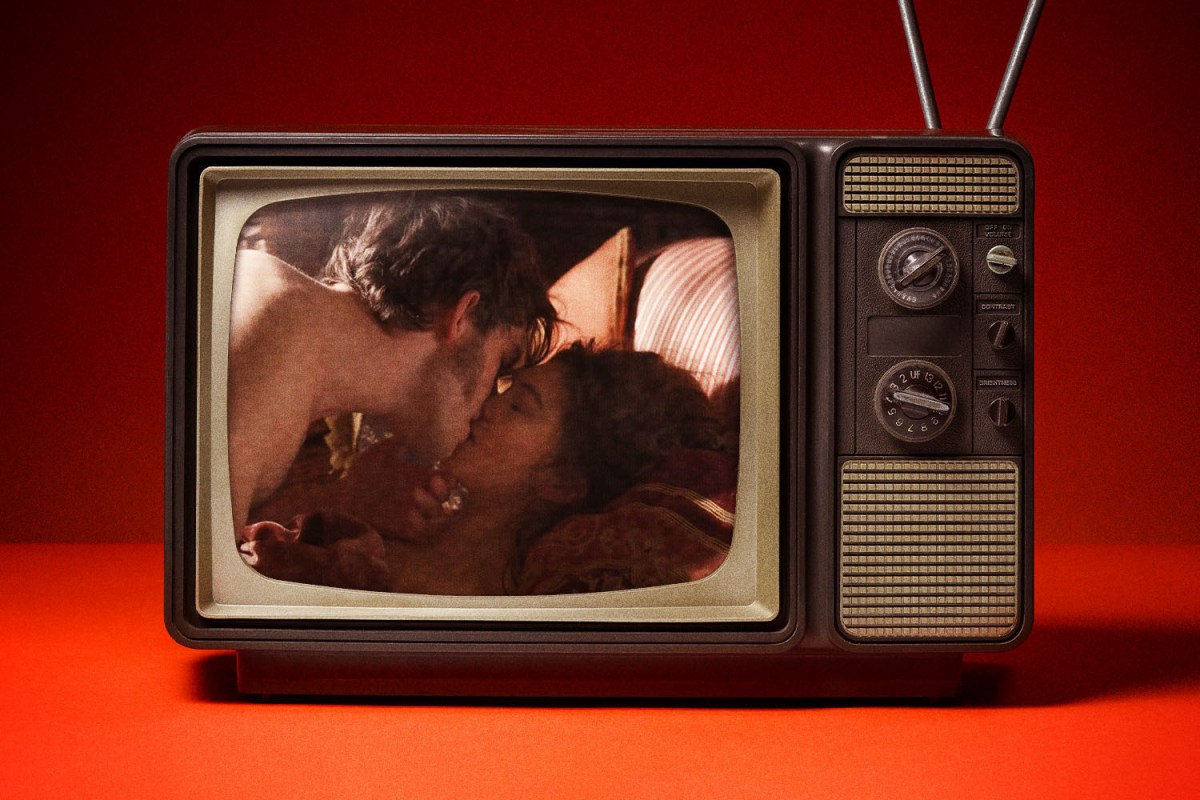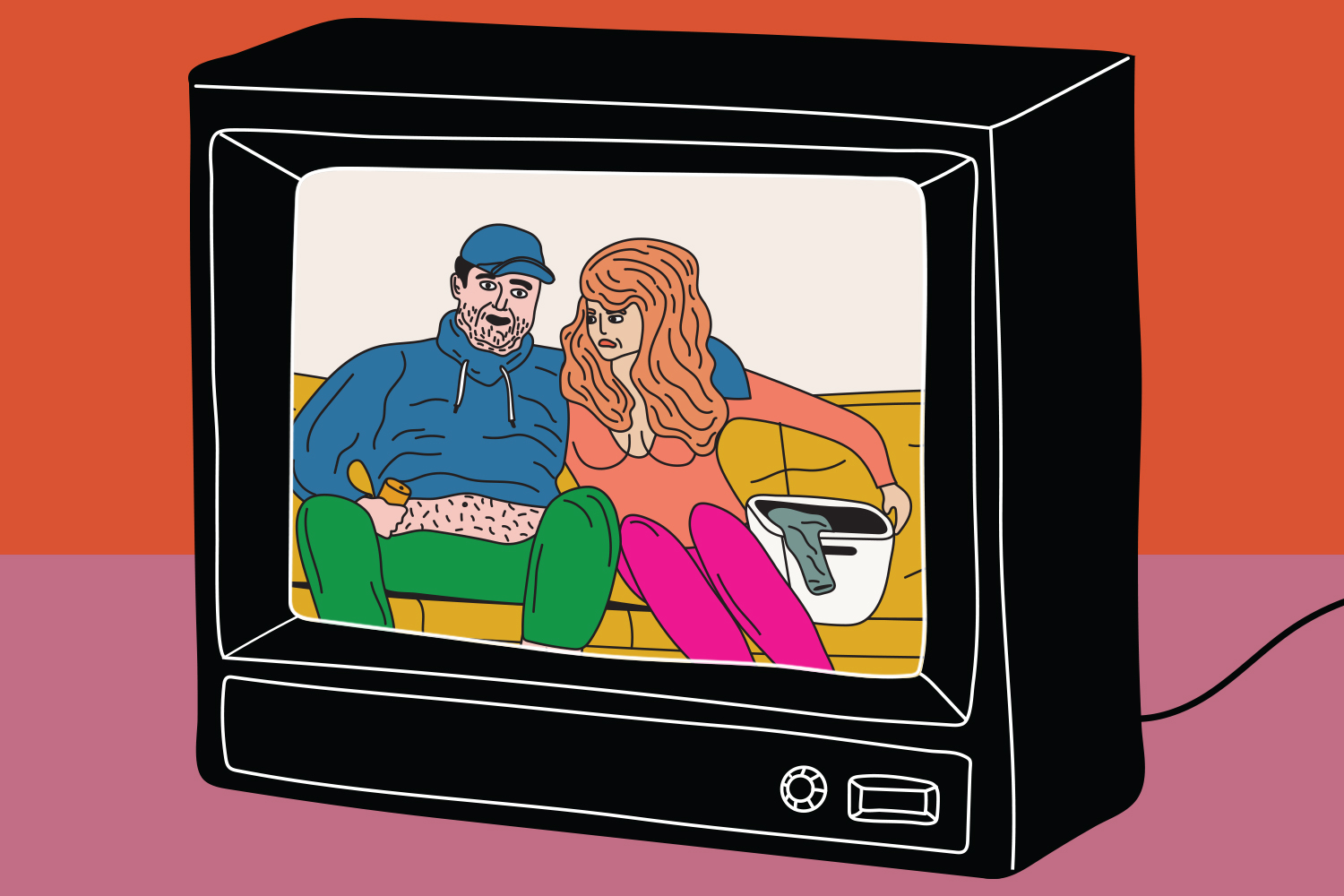When it comes to onscreen intimacy, we’ve come a long way from Lucy and Desi sleeping in separate twin beds on I Love Lucy or Alfred Hitchcock instructing the stars of 1946’s Notorious to pull away from each other every few seconds to get around the censors’ three-second kiss limit and sneak what amounted to a two-and-a-half-minute makeout scene into the film.
Nowadays, especially as more and more streaming services — unencumbered by the oft-ludicrous FCC regulations their broadcast counterparts are subject to — crop up, pretty much anything goes. But do fewer restrictions on what exactly you can show mean that what’s being shown in scenes that feature nudity or depictions of sex is actually pushing pop culture forward in a responsible, meaningful way?
For decades, the answer was no. Traditionally, Hollywood sex scenes were designed to titillate male audiences, often featuring gratuitous female nudity as actresses were expected to writhe around and moan for a few seconds with zero foreplay before inexplicably climaxing. Any sort of realistic depiction of what sex often can be — awkward, messy and sometimes quite unsexy — was a no-no, as were scenes centered around female desire, LGBTQ+ characters or anyone whose body didn’t fit the industry’s cookie-cutter standards of beauty. On top of that, in a pre-Me Too world that lacked the proper workplace protections to ensure their safety, actors were often pressured to shoot scenes that went outside their personal comfort zones. Take, for example, the infamous rape scene in 1972’s Last Tango in Paris, in which director Bernardo Bertolucci didn’t tell actress Maria Schneider “what was going on, because I wanted her reaction as a girl, not as an actress. I wanted her to react humiliated.”
In recent years, however, on-set intimacy coordinators have become more commonplace to act as liaisons between actors and directors and choreograph sex scenes in a way that makes everyone involved feel safe and comfortable. Shows like Netflix’s Sex Education have gone above and beyond with their realistic depiction of awkward teen sex, featuring participants of all sexual orientations and addressing once-taboo subjects in a frank, comforting way that makes it rival any actual sex education class. Others, like the soapy period piece Bridgerton, have gone out of their way to put female pleasure front-and-center (in one episode, for example, we see the hunky Duke of Hastings enthusiastically performing cunnilingus on his bride). Dramas like Hulu’s Normal People and HBO’s I May Destroy You have used sex scenes to highlight the importance of obtaining consent.
But for every improvement, there’s still a contemporary, mainstream Hollywood sex scene that feels like a relic from a bygone era, like that of 2019’s The Long Shot, in which Charlize Theron and Seth Rogen’s characters both orgasm (at the same time, conveniently) after just 10 seconds — 10 seconds! — of penetrative sex and no foreplay. Such depictions are damaging, because they give viewers unrealistic expectations for their own real-life sexual experiences.
Ita O’Brien, founder of the consultancy/advocacy organization Intimacy on Set and an intimacy coordinator who has worked on shows like Sex Education, Normal People and I May Destroy You, says she’s spoken with couples therapists whose patients have been led to believe that something is wrong with their sex life because it doesn’t resemble what they’ve seen in movies and on TV.
“One conversation was that this couple came to this therapist and they said, ‘We have a problem,’” O’Brien tells InsideHook. “When they explained the problem, the therapist goes, ‘You’re normal. Who you are and how your sex life is is just normal. But what’s being depicted and what many people are just watching through adult sites is an unrealistic expectation.’ Very often, how someone learns about intimacy is through what they see. That is the medium through which we’re entertaining ourselves, but also reflecting our humanity back to itself. That’s what people feel that they need to aspire to. When it’s so unrealistic, it forms a real schism in how people think they should be and what they think is normal.”

In order to bring more realism to onscreen intimacy scenes, O’Brien’s organization has begun working with couples therapists to learn “more of the realities of the detail of sexual arousal, both for people with male genitalia or female genitalia.”
“One of the couples therapists was saying to me, ‘I just want to see when you wake up in the morning and someone goes to kiss someone and they go, “Ugh, no. Go brush your teeth first. You’ve got smelly breath.” Just something as standard as that.’ Which, again, I agree. Let’s just lift the lid and bring more normal-ness and more everyday-ness and embrace who we are and what our relationships are with our body, then we can help to continue that journey of making more realistic content.”
Dr. Kate Balestrieri, a licensed psychologist, certified sex therapist and founder of Modern Intimacy, an organization focused on “the intersection of mental health, relationships and sexuality in an ever-changing, contemporary landscape,” is also disturbed by the lack of realism in most sex scenes. Obviously it’s impossible for an hour-long TV show to include a 20-minute sex scene, but by omitting foreplay entirely and giving viewers the idea that a few pumps will get the job done, she believes pop culture’s blunt, idealized depictions can cause real-life health problems.
“People model what they see and then are surprised when their experience is messier, less glamorous, more awkward than what they have seen on screen,” Balestrieri explains. “Further, very few movies and TV sex scenes discuss sexual health and risk prevention seriously. When safer sex practices, condoms, unwanted pregnancy or STIs are depicted, it is often with a comedic or dramatic and shaming approach. This perpetuates stigma about sexuality, shame about sexual health, minimization of real-life risks and protective strategies, and makes it even more taboo and challenging for people to talk openly about their concerns or desired safety practices.”
The virgin/whore dichotomy is still a major issue when it comes to female characters; more often than not, they’re either depicted as chaste and sexless or slutty and objectified. This, of course, leads young women watching to associate their sexuality with shame. But while female characters are slut-shamed, their male counterparts are made to feel ashamed of their sexual inexperience (think The 40 Year Old Virgin, or any of the many teen comedies in which a male character’s quest to lose his virginity is played for laughs). And when sex is portrayed as quick and easy — something that can be accomplished with with little-to-no stimulation before penetration — people are often surprised and embarrassed when their real-life experiences differ.
“In real life, bodies take time to warm up, get erect, lubricate, etc.,” Balestrieri says. “Without realistic sex depicted on camera, many people walk away from sex with a partner thinking they are doing something wrong or are ‘not good at sex.’ They internalize the message that something has to be wrong with them or their partner, because in the movies, something else is the norm. Sex is such an intimate act, and one in which we are our most vulnerable physically and emotionally, [that] feeling inadequate even a few times can send someone into a shame borough that may lead to sexual dysfunction, relational insecurities or an avoidance of sexual or romantic intimacy in real life.”
Of course, the real-life consequences of problematic onscreen depictions of sex extend far beyond the impact they can have on one’s confidence in their own sexual abilities. Because people tend to imitate what they see on TV or in movies, it’s also crucial that sex scenes demonstrate how to properly obtain consent. For O’Brien, scenes in which characters clearly ask and/or give verbal consent and practice safe sex are two of the biggest trends in onscreen intimacy she’s noticed in recent years.
“It’s interesting that there’s a little arc of productions being called ‘consent dramas,’” she says. And in many cases, it was her job to ensure that those scenes were executed in ways that were comfortable for all the actors involved. In I May Destroy You, actress Weruche Opia opted to use a body double for a scene in which her character participates in a threesome. “Because of her boundaries, it wasn’t suitable for her,” to shoot the scene herself, O’Brien explains. However, she still was involved in the choreography of the scene, advocating for her character’s needs.
“Weruche was on a monitor with the director and she, in particular, wanted to make sure that it was seen that it was safe sex,” she recalls. “She wanted it to be seen that the moment of the condom been taken off and tied, that that was a really clear beat in that scene. So, again, it was seen that it was safe sex … In the past, it was like, ‘Just get on with it,’ where those kind of details couldn’t be discussed or considered because it wasn’t spoken about professionally and clearly. Now that we have that process through intimacy coordination, we can make sure that those requests are honored. That’s why we’re getting that kind of detail. It starts to bring confidence that you can ask for protection and ask for that consent — not just asking for the beginning of a sexual encounter, but to keep asking it throughout, which again just brings such a better idea of what [consent] means, how we can engage through a sexual encounter, and how asking for consent doesn’t have to be a passion-killer.”
Intimacy coordination plays a huge role in bringing these types of scenes to the screen, but some directors still see the role as an unnecessary burden — something akin to an on-set babysitter, constantly getting in the way and stepping on their toes creatively. But director Anja Marquardt, who has directed sex scenes both without on-set intimacy coordinators and with them, says she now views the role as essential.
“It certainly brings in another component of flexibility to have an intimacy coordinator, because on the one hand, they can act as a go-between and sort of an element of added safety for the actors,” she says. “But then also they can come up with movement choreography and open their bag of tricks and pull out all sorts of props that will enable certain body postures or movement, or help simulate certain things for camera that I could never come up with. And unless you’ve done this kind of stuff and choreographed it, how would you know? So that was really my big epiphany working with an intimacy coordinator: ‘Oh my God, there’s so many different ways to do this. Great. Let’s find the best version of this.’ I think an intimacy coordinator can just take a lot of uncertainty out of the process, both on the after side as well as the practicality of, ‘How are we actually going to shoot this?’”
Marquardt worked with an intimacy coordinator on the third season of the Starz anthology series The Girlfriend Experience, which stars Julia Goldani Telles as Iris, a neuroscience student who works for a company that designs AI software for a matchmaking service and moonlights for a mysterious escort service called The V. She says working with an intimacy coordinator helped her juggle the technical constraints of shooting and the comfort and safety of Telles and her other actors.
“There is a component that is very technical that when actors are wearing intimacy garments, it becomes very contractually sort of agreed upon what any given shot should look like,” she explains. “And then let’s just say the idea is to minimize nudity or have it be justified by the scene, but then you arrive on location and the camera sort of might be moving. And then you realize, ‘Okay, in order to execute this at a high level, we’re going to have to modify the intimacy garment, or we’re going to have to just shoot the whole thing from a different angle.’ So it becomes this interesting dance as you’re sort of eking out the ways to safely do it and still have it feel like there is a certain freedom of movement or freedom of expression that you can generate, because you don’t want to limit the actors or limit the camera and kill the flow, so to speak. But at the same time, you want to be protective of the performers, you know, with the times we live in where it’s very understandable that no one wants gratuitous moments that could end up on some subreddit or whatever.”

And just as it was important for Marquardt to make sure that her show’s sex scenes were filmed safely and practically, she also felt it was absolutely crucial that they be presented in a way that avoids salaciousness or catering to the male gaze.
“I think to me that really has to do more with point-of-view than anything else,” she says. “And in our case, we wanted to make sure that we would always be in the point-of-view of our lead character Iris, who goes into various situations and has her own sort of emotional arc through these scenes, but also is creating an experience for her clients. And we wanted to be able to track both of those, and the only way to do that would be really sort of a biased narrator, seeing the scene through Iris’s eyes. And I think making it her point-of-view allowed us for her to show her as the subject, as opposed to an object. And it was equally important to me to make the supporting characters, or the clients she meets with, their own subjects. So not objectifying our leads didn’t come at the detriment of anyone else’s objectification. Any sort of objectification didn’t seem like the right way to go about this.”
Presenting sex scenes in a way that doesn’t objectify anyone — especially female performers, who have been reduced to sexual objects on screen for just about as long as cinema has existed — often requires those behind the camera to unlearn the norms that they’ve seen onscreen for decades.
“[The male gaze] is so inherent,” O’Brien says. “One time that comes to mind is, I was working on a production where the writing is such that it’s done from the male character’s point of view and then done from the female character’s point of view. It was a marvelous male director who was directing it. We shot it, first of all, from the male character’s point of view, which of course is telling his story, so his full face. But then when it was flipped to tell it from the female character’s point of view, so therefore you want to really get the female character’s perspective, and at some point for her to be full face, full camera, so you’re really getting the impact of her story. The director kept on having her in profile and it still being the male perspective. One of the producers was commenting, ‘No, it’s still being told from his story.’ You could see that it was just inherent, where that male director — incredibly respectful, fabulous director — had this realization like, ‘Oh my goodness. That’s just inherent.’”
However, O’Brien is adamant that there are times when the male gaze is appropriate for a particular storyline. In her mind, it’s not so much about erasing it entirely as it is balancing it with a more equal number of scenes in which men are the ones being gazed upon. (Like, say, the much-talked-about penis scene from Netflix’s recent Sex/Life.)
“This whole thing about ‘we’ve got to eliminate the male gaze,’ it’s not about that we have to negate one to allow the other to happen,” she says. “Of course, whenever we’re trying to rectify something, the pendulum spins the right way to the other way. For me, the male gaze is right and proper and there’s a place and time when the narrative is asking for it. For me, it’s not about elimination, but it is about becoming conscious that for so long the default has been the male gaze, whether people are aware of it or not. That’s what we need to call to task.”
Ultimately, while much improvement has been made in recent years, there’s still a long way to go when it comes to diversifying the sex we see on screen, both in terms of the kind of sex being had and who’s having it.
“I think we’re still trapped a bit in the paradigm of ‘sex sells,’” says Marquardt, “and as boundaries are being pushed in real time with the access to all sorts of content online — and there’s a lot of creator apps that are pushing the boundaries, like OnlyFans — I think talking about human connection and the way characters interact, long term, there is an opportunity to just embrace a lot of new and different types of depiction that are untethered from that old paradigm. The bluntness of kind of just giving the audience the good old T-and-A, I think it’s very narrow in terms of the kinds of stories that are going to be told.”
O’Brien is confident that progress can continue to be made as long as intimacy coordinators continue to become more commonplace — perhaps one day so much so that they’re the industry standard.
“What I’m hoping for, ultimately, is that the role of the intimacy coordinator is understood by the industry at large,” she says. “Just as if there’s a fight — no one would dream of doing a production or doing any moment of simulated violence without a stunt coordinator! — it needs to be the same with intimacy. So that’s what we’re working for: it just becomes inherent.”
But as Balestrieri points out, modernizing the way sex is depicted in pop culture should extend beyond sex scenes themselves if we stand any chance of reaching true inclusivity and destigmatizing frank conversations about sexual health.
“Presenting more common and everyday sexual topics into non-sexual scenes would be a fantastic way to utilize film and TV to normalize things like discussing STI status on a date,” she says. “Incorporating more conversations about sexual health, pleasure and function in a way that is non-shaming, not salacious, and is instead normalized, will have a tremendous effect on the collective conversation about sex in society. Let’s normalize more parents having healthy discussions about sex with their children, so people see it and can envision it being possible in their own family. Let’s normalize more talk and depiction of solo sex and the benefits of masturbation. Modern sex scenes that focus on the inclusion of people of all backgrounds, body types, religion, race, ethnicity, gender, relationship status, etc. will reshape the way we think about and access sex on a global scale. Normalizing kink onscreen will help reduce shame for millions of people with very healthy kinky fantasies and sex play in real life. Actively reducing taboo around some aspects of people’s fantasies allow them to be played out in more healthy, conscious and consensual ways in real life.”
Because we live in a world where talking about sex is still uncomfortable, we have to show rather than tell. A teen girl might be too embarrassed to raise her hand in health class and ask a question about her body, but she can flip on the TV and find any number of examples of how it’s supposed to look and function. For far too long, those examples were damaging. But thanks to a new generation of intimacy coordinators, writers and directors who are determined to make a change, healthier onscreen sex might finally have substantial positive offscreen implications.
Whether you’re looking to get into shape, or just get out of a funk, The Charge has got you covered. Sign up for our new wellness newsletter today.






















